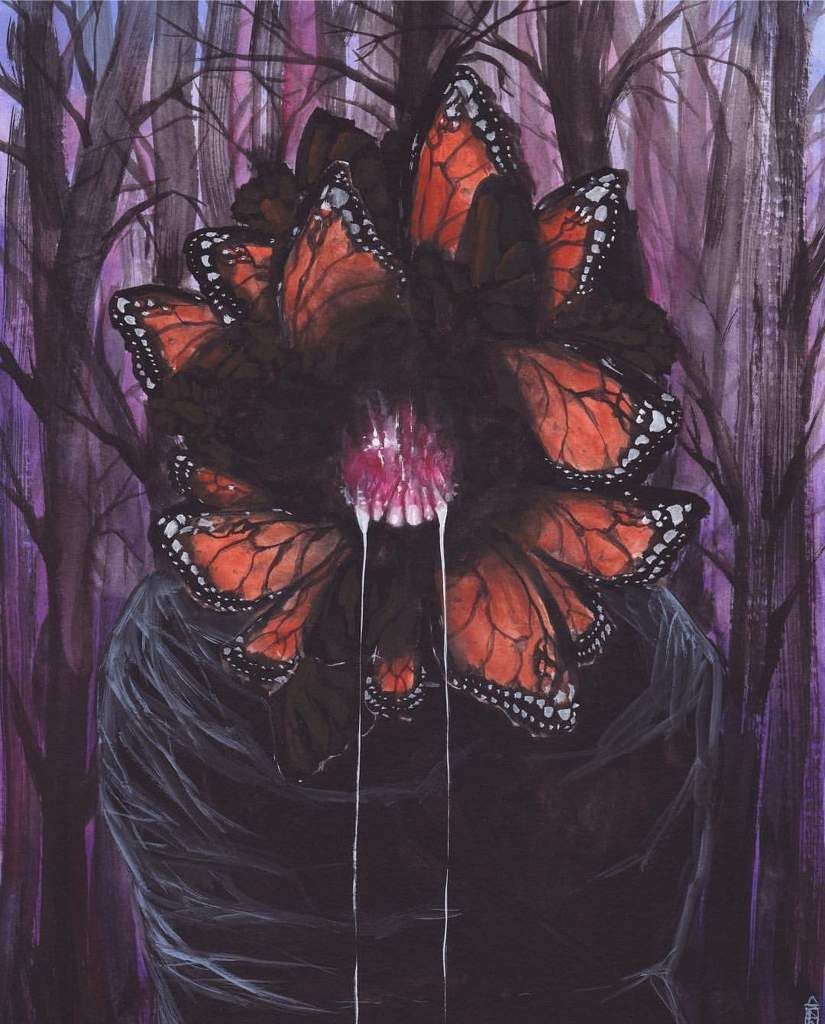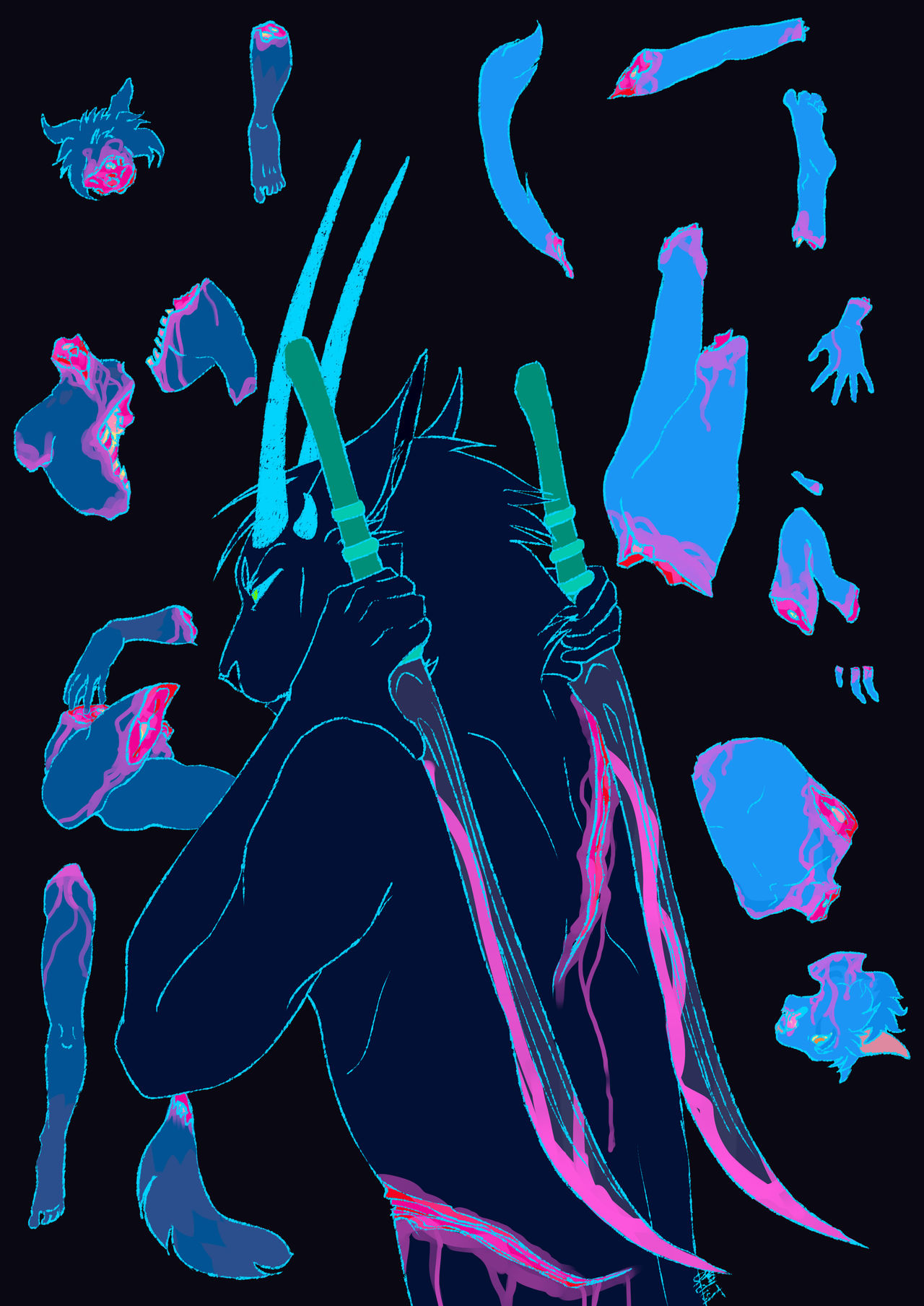Have you ever stopped to think about art that truly pushes boundaries, that might even make you feel a bit uncomfortable, but still draws you in? That, you know, is often the experience with gore art. It's a type of visual expression that deals with intense, sometimes graphic, depictions of violence, injury, or even death. For many, it's a fascinating area, sparking strong reactions and deep conversations about what art can truly be.
This kind of art, actually, has a long history, appearing in various forms across different cultures and times. From ancient stories that showed suffering to modern films that really push the limits, gore has captivated people's imaginations. It has a way of making us confront difficult feelings and ideas, which, you know, is part of its unique power.
So, what exactly is it about gore art that draws artists to create it and viewers to look at it? Is it just for shock value, or is there something deeper at play? We're going to explore this intriguing and often debated art form, looking at its purpose, its platforms, and why it holds such a compelling, sometimes unsettling, place in our visual world today.
Table of Contents
- What is Gore Art?
- Why Artists Create Gore Art
- Where to Find and Share Gore Art
- Gore Art Through History
- The Appeal and Controversy
- FAQ About Gore Art
What is Gore Art?
Gore art, simply put, is a visual style that shows blood, guts, and other visceral elements. It's often linked with horror and macabre themes, but it can appear in many different artistic styles. This kind of art, you know, aims to provoke a strong emotional or physical reaction from the viewer. It's about showing pain, suffering, and the very limits of what a human body can endure.
Artists use these graphic elements, for example, to explore complex ideas. They might be looking at the fragility of life, the nature of evil, or even the darker sides of human experience. It's not always just about being shocking; sometimes, it's a way to make a powerful statement or to tell a very intense story. Really, it can be quite thought-provoking.
You'll find gore art in many forms, like drawings, paintings, digital art, and even sculpture. It can feature zombies, monsters, or just, you know, really intense scenes involving people. The goal is to make you feel something, perhaps a bit of unease, or maybe even a strange fascination. That, in a way, is the essence of it.
The core of gore art, as a matter of fact, lies in its directness. It doesn't shy away from showing the raw, often unsettling aspects of existence. This directness is what gives it its unique impact, pushing viewers to confront things they might typically turn away from. It's a style that demands attention, and often, a strong personal reaction.
Why Artists Create Gore Art
Artists who create gore art often have very specific reasons for doing so. One common reason, actually, is to confront viewers with uncomfortable truths. They might use blood and guts to show the reality of pain or the consequences of violence. This approach, you know, can make people think deeply about difficult subjects they might otherwise avoid. It's a way to bring hidden things into the open.
Sometimes, it's about pushing creative limits. Filmmakers, for example, might use extreme gore in what's called "splatter cinema." They do this, not just to shock, but to make art, or maybe even satire. It's a way, more or less, to explore the boundaries of what's acceptable and what can be shown. This can be a very powerful artistic choice, too.
For some artists, it's a deep passion, a dedication to horror and the macabre. As one artist put it, it's "extremely rotten illustration, dedicated to death, horror and gore with a fuckin' passion since 2003." This suggests a genuine interest in the darker aspects of life and imagination. It's almost like a way to process or express those intense feelings, a sort of creative outlet for the macabre.
Others might use it to explore specific themes, like, you know, torturing a comfort character. This, in a way, shows how artists can use gore to play with expectations and create narratives that are both disturbing and intriguing. It's about showing "tooooooooons of gore in various mediums and various situations," which means there's a lot of creative freedom involved. Artists might also use it to comment on societal issues, using the shocking visuals to draw attention to real-world problems or injustices. It’s a pretty direct way to get a message across.
Where to Find and Share Gore Art
If you're looking to discover art related to gore, there are quite a few places online where artists share their work and communities gather. DeviantArt, for instance, is a really popular spot. You can check out amazing gore artwork there, and find pieces related to "goreart," "animegore," and "gorehorror." It's a place where you can get inspired by a community of talented artists, and, you know, see a wide range of styles.
Behance is another major creative network. It's the world's largest, actually, for showcasing and discovering creative gore artwork and "horrordrawings." You can browse thousands of gore drawing projects there, seeing examples in many different styles, media, and themes, like blood, zombies, and horror. It's a great resource for visual inspiration, really, showing how artists approach these challenging subjects.
Pinterest, too, is a good place to find and save ideas about gore art. It's like a visual bookmarking tool where you can collect images that resonate with you, building your own personal collection of inspiring or thought-provoking pieces. Then there's Gurochan, which is an online internet image board. It was founded in 2004 and, you know, is said to be the largest guro website in the world. Here, you may post on boards that serve a variety of topics, including regular gore, offering a very specific kind of community.
There are also more niche places, like those dedicated to "serial killer artwork and other macabre exhibits." This shows the wide range of interests within the broader macabre art community. While some communities exist in "dark corners of the web" around a desire to watch real footage, it's important to distinguish that from artistic expression. Art, in a way, is about creation, not consumption of actual harm. You can learn more about artistic expression and its boundaries on our site, which is pretty important to understand.
These platforms provide a space for artists to share their work freely and for viewers to engage with it, fostering a sense of connection among people who appreciate this particular style. You can discover new artists, find inspiration for your own creative projects, or simply, you know, explore the vast and varied world of gore art. It's a thriving community, in some respects, for those who seek it out.
Gore Art Through History
The presence of gore in art is not a new thing; it has a very long and rich history. From ancient mythology and folklore, stories often contained elements of violence and suffering. These tales, you know, would sometimes describe gruesome events, which were then depicted in early forms of art. It's almost like humanity has always been fascinated by the intense and the visceral, showing it in their creative works.
Think about classical sculptures or paintings that show battles or sacrifices. Many of these, actually, depict wounds, blood, and the raw impact of conflict. These historical examples of gore in art show how artists have, for centuries, used such imagery to convey powerful messages about heroism, tragedy, or even religious narratives. It's not just a modern trend, really; it's a thread woven through art history.
In contemporary times, gore has taken on new forms, especially with the rise of cinema and digital art. "Splatter cinema," for instance, pushes gore to its absolute limit, not just for shock, but often for art or satire. This shows how the use of gore has evolved, becoming a tool for filmmakers to explore complex themes or even just, you know, express sheer madness. This evolution is quite interesting, too, reflecting changes in technology and societal norms.
So, exploring these historical and contemporary examples helps us see that gore in art isn't just about gratuitous violence. It's a consistent thread in human creativity, used to confront, to question, and to express. It's a reflection, in some respects, of our ongoing fascination with the extremes of human experience. You can find more about the history of challenging art on this page, which gives a broader view of how art can push boundaries over time.
From ancient cave drawings depicting hunts to modern digital creations, the human impulse to show the harsh realities of life, and sometimes death, has persisted. This continuity suggests that gore art taps into something very fundamental about our shared human experience, our fears, our resilience, and our capacity for both creation and destruction. It's a powerful way, you know, to make sense of the world around us.
The Appeal and Controversy
One of the most intriguing things about gore art is how it manages to captivate some people while unsettling others. For those who are drawn to it, there's often a sense of fascination with the intense emotions it evokes. It might be about exploring the darker aspects of the human condition, or simply appreciating the technical skill involved in depicting such difficult subjects. It's a very unique kind of appeal, that.
However, it's also a highly controversial genre. Many people find gore art disturbing, inappropriate, or simply too graphic to look at. Questions often arise about its purpose: Is it just for shock? Does it desensitize viewers to violence? These are valid concerns, and they spark a lot of debate, which, you know, is understandable. It's a topic that brings out strong opinions from many different sides.
The discussion around "why would someone like gore?" or "how to view gore as a hobby?" shows this division. Some see it as a way to confront fears or explore taboos in a safe, artistic setting. Others worry about its potential impact, especially when it blurs lines with real-world violence. It's a delicate balance, really, between artistic freedom and public comfort, and it's a conversation that continues to evolve.



